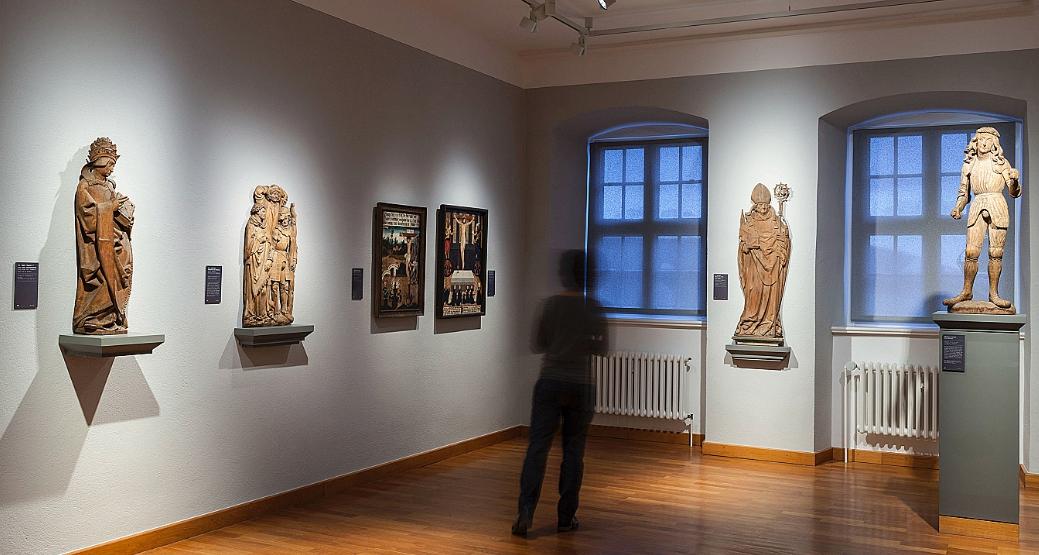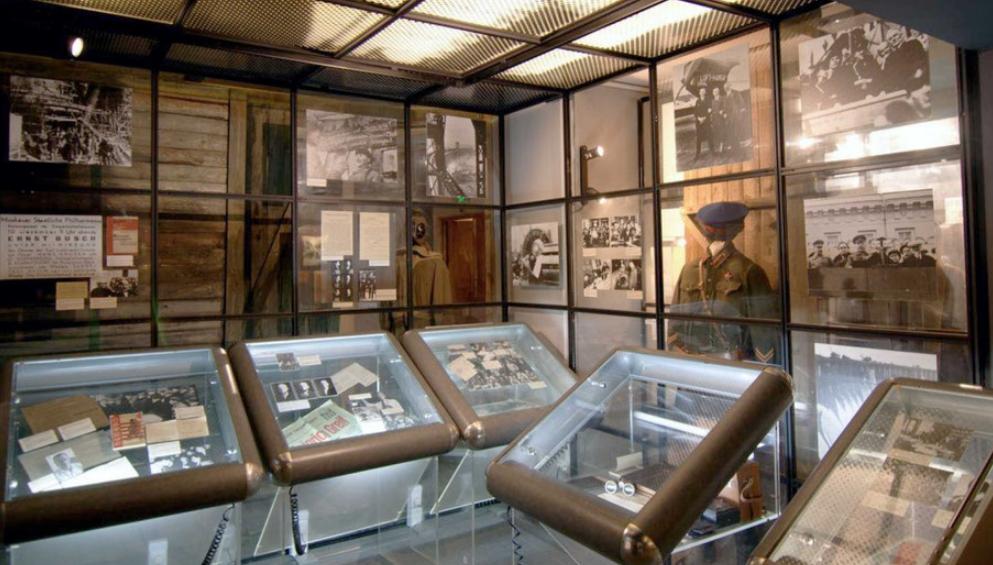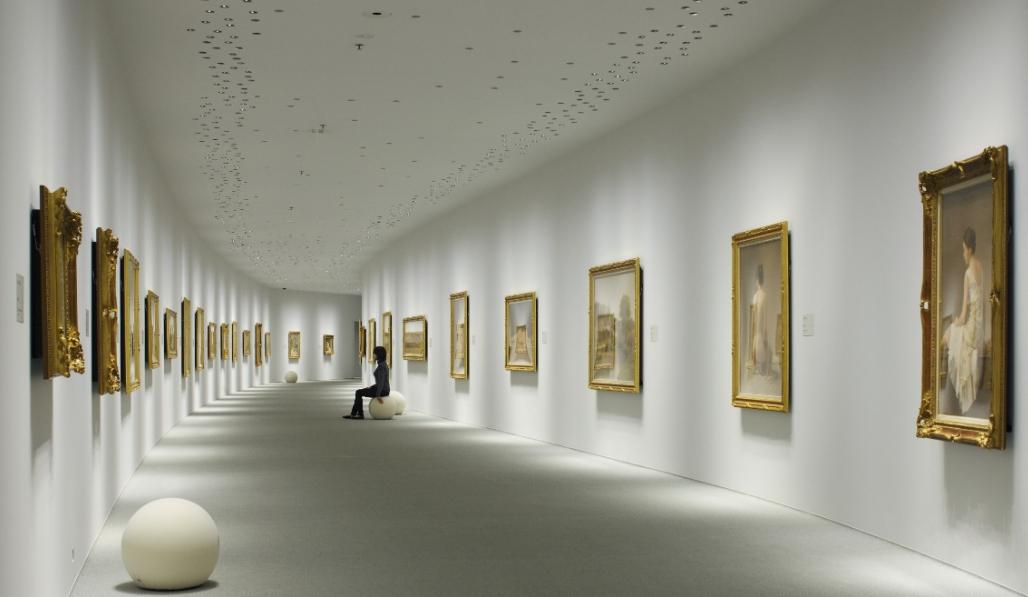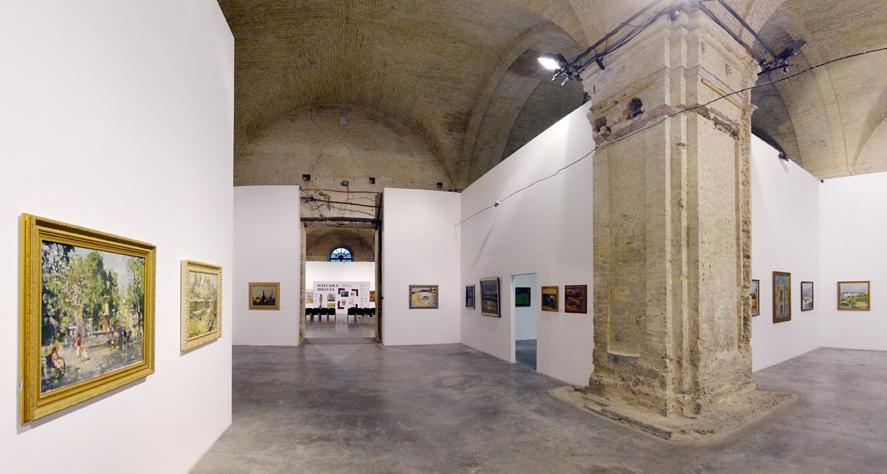Features of LED lighting in museums, exhibitions and galleries
Lighting for museum halls differs from other options in a number of criteria. By using light, it is possible to accentuate the objects on display, create the necessary atmosphere and manage the attention of visitors. However, it is important to follow the basic rules established for this area and use safe lighting fixtures.
What are the purposes of lighting in a museum?
To avoid mistakes in the planning and installation of lighting for museums or exhibitions, you need to understand what it is needed for and what tasks it should perform:
- Highlighting each exhibit Highlighting each exhibit and drawing attention to it. At the same time, the lighting is chosen so as to present the object in the most favorable light, but at the same time not to disturb perception.In a museum, the primary focus of lighting is on the exhibits.
- Maintaining good visibility for everyone. This applies not only to the illumination of exhibits and other objects, but also to safety when moving around and highlighting all the dangerous areas. When people are engrossed in the exhibit, they may not notice the steps, floor height differences, and other nuances.
- Light should not damage paintings and other exhibits. This can happen for two reasons - too strong radiation has a bad effect on paints or decorative coating, or the heat coming from the lamps close by will gradually destroy the surface.Backlighting can be installed in separate modules of small size.
Pros and cons of diodes
LED lighting in the museum has a number of advantages over other options, which made it the most popular today:
- Safety for exhibits. LEDs emit almost no heat, so there is no negative impact on the items. In addition, they run on low voltage, which increases fire safety and eliminates fatal electrocution even if the wiring is broken.LED lighting is not harmful to pictures.
- The lowest electricity consumption of all options. LEDs provide economical lighting, while the quality will be higher than that of analogues.
- Ability to adjust the brightness and color temperature. This is an important advantage for museum lighting, as you can choose the best mode for each exhibit, using the same lights. Adjustment takes a minimum of time.
- The equipment has a lifespan of 50,000 hours or more. This is the most durable solution that will last for years, even if it's constantly on.
LED fixtures are compact and can have different sizes and shapes, which is also important for museums and exhibitions.
Of the disadvantages are quite high price of equipment, but if we consider the long service life and low power consumption, all costs quickly pay back quickly ..
What do you need to consider when installing light
When planning the lighting at exhibitions, you must first take into account the following aspects:
- Determine what impressions this or that object or image should evoke. It's not just about what you feel, but what the creator intends.
- Reconceive a unified concept for the entire exhibition and take into account the specifics of the items on display.
- Take into account the presence of natural lightConsider natural light, if any, as it will affect the perception of the exhibition during the day.Natural color rendering is an important lighting requirement for exhibitions.
- Interior coloring and design. The surroundings and their characteristics should not be overlooked. The size of the room and its proportions are also important.
Impact on exhibits
All lighting can cause damage to paintings or other products because it radiates heat and a certain spectrum of waves. The worst effects on paints are ultraviolet and blue radiation, so it is better to exclude them from the spectrum.
In this regard, it is ideally suited to LEDsbecause with them it is easy to adjust the color and minimize all the negative effects. In addition, they are not very warm, so you can place the lights at a sufficiently close distance.
Attention management
By highlighting a particular area more vividly, it is not difficult to draw the visitor's attention to it. It allows you to set the general direction of movement, so that people move from one object to another in a certain sequence. With a competent arrangement, the elements are perceived as part of a single collection, rather than as disparate fragments.
Do not be overzealous when choosing the brightness of light, as you need to attract attention, not to create discomfort for the eyes or distort perception due to improperly chosen color temperature.
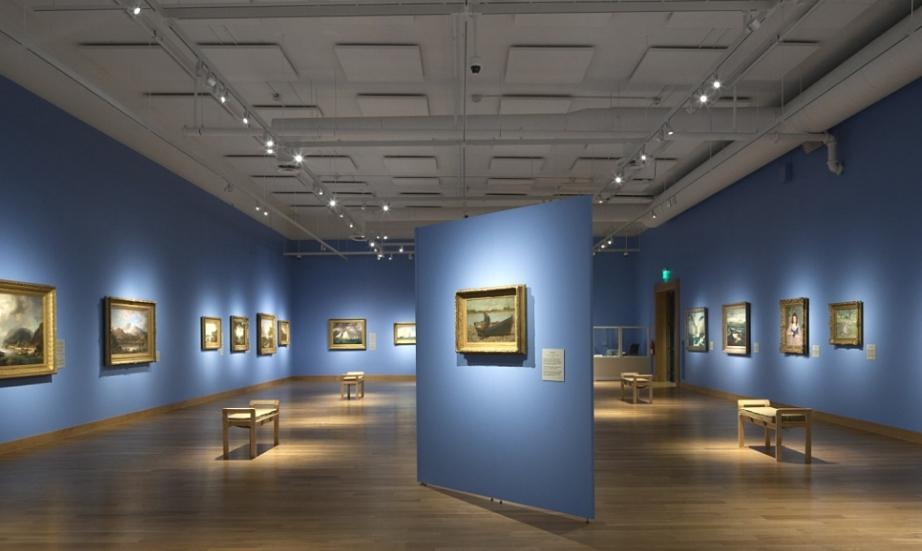
Direction and shadow
Light comes from a specific object, which is positioned above, to the side, to the front or on any other side. This changes perception, and often requires several lights on different sides to accentuate an element or a picture.
Exhibition objects should not be obscured by people passing by. Also, consideration should be given to natural light when it is present in the gallery, since sunlight can disturb the harmony of light and distort perception or create discomfort to the eye through glare and reflected light.
Standard requirements for museum lighting
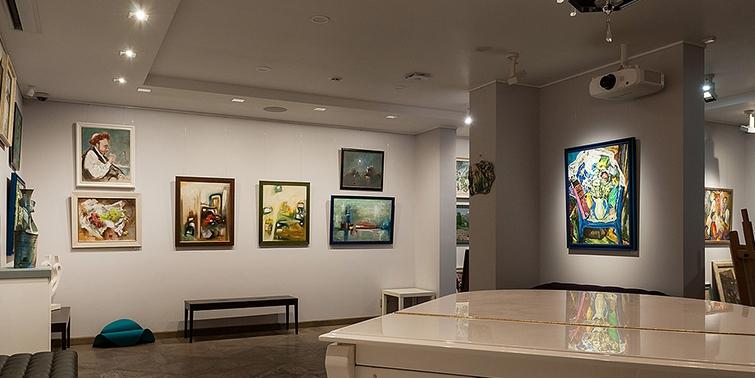
- For watercolor, fabric and newsprint, the minimum illumination is 50 lux.
- Oil paintings are illuminated at an intensity of 150 lux.
- When displaying jewelry and metals, the norm is 500 lux.
By the way! An important point today is to reduce the proportion of ultraviolet light.
Integration of natural and artificial light
If the room has windows, and natural light does not harm the exposure, you need to arrange objects so that they do not shine out of the windows. To regulate the intensity of the light they usually put blinds or hang heavy curtains on the window openings.
If in the hall hang pictures or other items that are afraid of ultraviolet radiation, it is better if the windows will not be at all. Apertures are closed with dense screens, and on the glass glued reflective film.
Techniques for lighting museums, art galleries, and exhibition halls
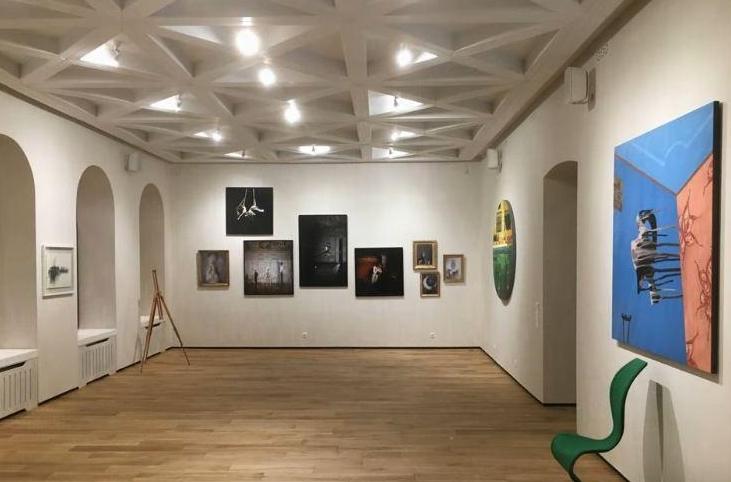
There can be a large number of options, it all depends on the characteristics of the exhibition. It is possible to highlight the main directions that should be followed:
- Contrast of light and shadow to draw attention to the object.
- Highlighting against the general background by an unusual angle of light incidence.
- Dynamic Lighting - suitable for contemporary expositions.
- A slight difference in light when the room is bright.
- Provides uniformity of light incidence over the entire object area.
- Cyclical variation in brightness.
It is best to develop a general concept and stick to it.
From the video you will learn: 4 secret lighting techniques for the interior of the museum and store on track lights.
Lighting for museums and exhibitions should make all objects stand out, draw attention to them, but without damaging the paint or fabrication material. It's important to follow established standards and not put the lights too close together.
